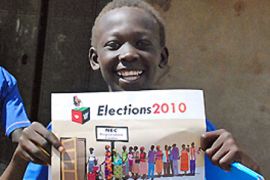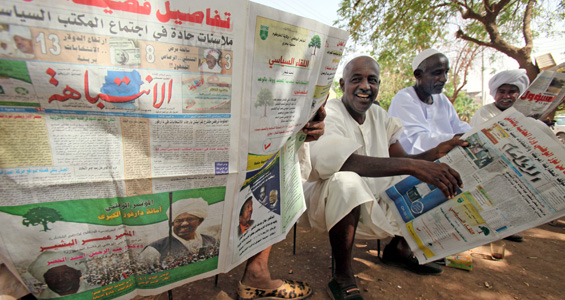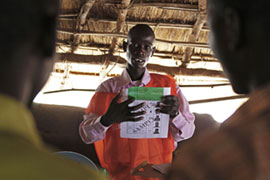A guide to the Sudanese elections
About 16 million people are eligible to vote in first multi-party polls since 1986.

 |
| Some 16mn eligible voters head to more than 11,000 polling centres in Sudan on April 11 [EPA] |
Between April 11 and 13, the Sudanese people will head to the polls in the country’s first multi-party elections since 1986.
The elections come at a critical time for Sudan: In March 2009, the International Criminal Court issued an international arrest warrant for Omar al-Bashir, the president, on war crimes and crimes against humanity against the non-Arab ethnic groups in Darfur.
The Sudanese government has persistently denied the accusations.
Al-Bashir’s National Congress Party (NCP) has ruled Sudan in a coalition with the Sudan People’s Liberation Movement (SPLM) since a peace deal that ended war between the two sides in 2005.
But in recent months, tensions have escalated between the two coalition members and the SPLM recently called for a boycott of the polls citing possible fraud.
According to the peace agreement, a referendum is to be held within one year of the elections to determine whether Sudan should remain a unified state or split into two – North and South Sudan.
What will the Sudanese be voting for on April 11?
Nearly 16 million eligible voters will have the chance to elect the president of the republic (one seat), the president of the government of southern Sudan (one seat), and the governor of each state.
They will also be choosing the national assembly (comprised of 450 seats), the southern Sudan legislative assembly (170 seats), and the legislative councils of the states. The elections will run over a two-day period.
Those who have not registered within the deadline that was set by the The National Elections Commission [NEC] will not be eligible to vote.
The eligibility criteria for registration stipulates that one must be 18 years of age, a Sudanese citizen, and have lived in a constituency for a minimum of three months.
How does Sudan’s electoral system work?
The Sudanese elections are being operated on a quota system based on geographical constituency and proportional representation.
Geographical constituency is based on voting districts formed by the NEC and was established to ensure that the needs and interests of the people in each of the geographical areas are equally and fairly represented.
The Legislative Assembly elections use the proportional representation system to ensure that parties win seats in proportion to the number of valid votes they receive. There is also a quota system in place to ensure that women occupy 25 per cent of seats.
A north Sudanese voter will have the opportunity to cast eight ballots.
Candidates for the president of the republic of Sudan, and gubernatorial candidates receive one ballot each. The national assemblies receive three ballots: one for the geographical constituency, the female candidate, and the running party.
The state assemblies also receive three ballots: one for the geographical constituency, the female candidate, and the running party.
A south Sudanese voter will have the opportunity to cast 12 ballots, in accordance with the same provisions as the north.
However, in addition to voting for the the president of the republic of Sudan and gubernatorial candidates, they will be also choose a president for the government of southern Sudan.
They will also be voting for the southern Sudan assemblies, which receive three ballots: one for the geographical constituency, the female candidate, and the running party.
How many polling centres are there?
 |
| More than 20,000 polling committees will oversee the elections in Sudan [REUTERS] |
The NEC has earmarked 7,803 polling centres in the north and 3,820 centres in southern Sudan.
Some 13,335 polling committees in the north and 6,738 committees in southern Sudan will monitor the elections.
Polling centres will open every day between 0500 and 1500 GMT; all registered voters already queued at the polling stations will be allowed in even if the deadline passes.
At the end of each polling day, ballot boxes will be sealed by the polling centre administrator in the presence of party monitors and international observers.
Ballot boxes will remain inside the polling centres guarded by security personnel and the police.
How will voter identity fraud be prevented?
After their identities have been verified against a voter registry list, voters’ fingers are dipped in semi-permanent ink to mark that they have cast their ballots.
This system has been used in other countries as a secure measure to prevent double voting.
For women who have henna on their hands, the ink will be marked on the left hand between the thumb and forefinger.
When will the election results be announced?
Counting of ballots is expected to begin shortly after the last polls close on April 13.
The results are scheduled to be announced on April 18. If there is no clear winner in the presidential election, the two leading candidates will move forward into a run-off held on May 10.
The run-off candidate who gets the highest percentage of the vote wins. The result of any run-off will be announced on May 11.